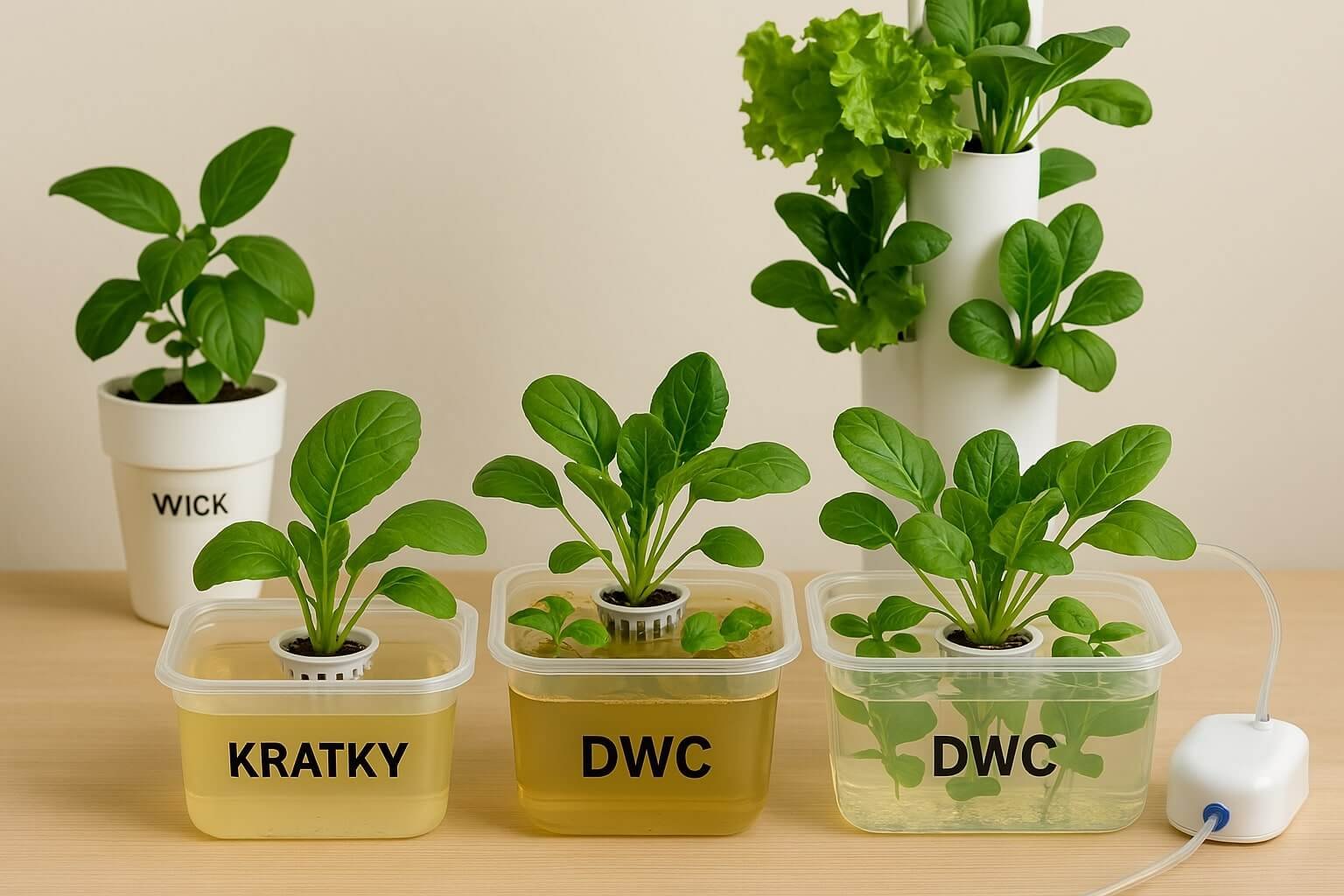Grow Without Soil
If you’ve ever dreamed of growing fresh herbs, leafy greens, or vegetables without battling weeds, messy soil, or unpredictable weather, hydroponics is your perfect solution. This beginner-friendly gardening method makes it easy to cultivate healthy crops year-round—even in small indoor spaces.
In this guide, we’ll break down the best hydroponic systems for beginners, how they work, pros and cons, and tips to get started. Whether you’re planting your first basil or planning an indoor lettuce harvest, we’ve got you covered.
🧠 What Is Hydroponics?
Hydroponics is a method of growing plants without soil, using water infused with nutrients. This system gives plants direct access to everything they need to thrive—nutrients, oxygen, and moisture—often resulting in faster growth and higher yields compared to traditional methods.
Benefits of Hydroponics:
- 🌱 Clean and soil-free growing
- 🚀 Faster plant growth
- 🍅 Higher yield potential
- 🌍 Space-efficient and eco-friendly
- 🧪 Easier nutrient control
🏆 7 Best Hydroponic Systems for Beginners
1. Kratky Method (Passive System)
The simplest hydroponic system, perfect for leafy greens like lettuce and spinach. No pump, no electricity needed.
Pros:
- Very affordable
- Low maintenance
- Ideal for hobbyists
Cons:
- Not suitable for large crops
- Limited nutrient circulation
2. Deep Water Culture (DWC)
Plants sit in a nutrient-rich water solution with roots fully submerged and oxygenated via an air pump.
Pros:
- Fast growth due to constant nutrient access
- Simple setup for small-scale growers
- Great for lettuce, basil, and kale
Cons:
- Requires monitoring water temperature and oxygen levels
- Electrical components involved
3. Wick System
Uses capillary action to draw nutrients up to plant roots through a wick.
Pros:
- No pump required
- Affordable and beginner-friendly
- Best for herbs and houseplants
Cons:
- Not suitable for high-water-demand crops
- Slower growth than other systems
4. Nutrient Film Technique (NFT)
A thin stream of nutrient-rich water flows over roots in a sloped channel.
Pros:
- Water-efficient
- Reusable system
- Scalable for small or large setups
Cons:
- Roots can dry out if water flow stops
- Requires constant monitoring
5. Ebb and Flow (Flood and Drain)
Uses a pump to flood the grow tray with nutrients, then drains it back into a reservoir.
Pros:
- Good oxygenation and nutrient circulation
- Suitable for diverse crops
- Offers automation options
Cons:
- Complex setup for beginners
- Sensitive to pump failures
6. Aeroponics
Roots hang in the air and are misted with nutrient solution. High-tech but highly efficient.
Pros:
- Maximum oxygen exposure = rapid growth
- Uses less water
- Ideal for tech-savvy gardeners
Cons:
- Expensive setup
- Requires precise calibration
7. Vertical Hydroponics
Plants are stacked vertically, saving space and maximizing output.
Pros:
- Space-saving design
- Excellent for herbs and leafy greens
- Aesthetic and functional
Cons:
- May require custom-built support structures
- Cost depends on complexity
🛠️ Factors to Consider Before Choosing a System
Choosing the best hydroponic system depends on:
| Factor | Recommendation |
|---|---|
| 🌿 Crop Type | Leafy greens for Kratky or DWC |
| 🏡 Space | Small spaces suit Wick and DWC |
| 💧 Maintenance | Low-maintenance systems: Wick, Kratky |
| 💡 Budget | Start simple, scale up |
| ⚡ Electricity | No electricity: Wick, Kratky |
🧪 Starter Kit Essentials
As a beginner, your hydroponic starter kit should include:
- Grow containers or net cups
- Nutrient solution (pre-mixed or DIY)
- Air pump (for systems like DWC)
- pH meter and EC tester
- LED grow lights (for indoor setups)
- Seeds of fast-growing greens
🔍 How to Maintain Your Hydroponic System
- Check water levels weekly
- Monitor pH (ideal 5.5–6.5)
- Clean reservoirs monthly
- Keep roots oxygenated
- Use timers for light cycles
- Watch for algae or root rot
🚀 Tips for Success
- Start with hardy crops: lettuce, spinach, basil
- Track plant growth in a journal
- Keep backup nutrient solution
- Don’t overcrowd your setup
- Experiment with different systems once you’re confident
🤔 FAQs – Best Hydroponic Systems for Beginners
Q1: What is the easiest hydroponic system to start with?
A: The Kratky method is hands-down the easiest—no electricity, no pumps, just set it up and watch your greens grow.
Q2: How much does a beginner hydroponic system cost?
A: You can start with as little as $25 for DIY setups like the Wick system. More complex systems may range from $100–$500.
Q3: Can hydroponics be done without electricity?
A: Absolutely! The Kratky and Wick systems operate without pumps or timers.
Q4: What plants grow best in hydroponics for beginners?
A: Leafy greens like lettuce, spinach, and herbs like basil and mint are easiest and most forgiving.





